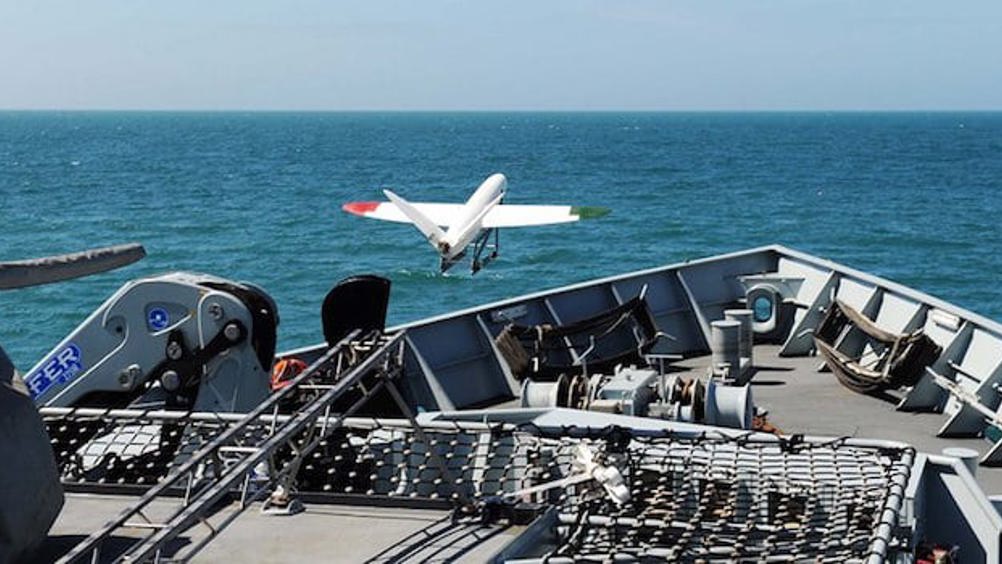Royal Navy ship flies 3D-printed UAV
A team from Southampton University has launched its SULSA unmanned aerial vehicle from a Royal Navy surface ship, a development claimed to mark an advance in sea launched UAVs.

Weighing 3kg and measuring 1.5m, the airframe was created on a 3D printer using laser sintered nylon and catapulted off HMS Mersey into the Wyke Regis Training Facility in Weymouth, before landing on Chesil Beach in Dorset.
The approximately 500m flight lasted less than few minutes but demonstrated the potential use of small lightweight UAVs that can be launched at sea.
SULSA (Southampton University Laser Sintered Aircraft) carried a small video camera to record its flight and Southampton researchers monitored the flight from their UAV control van with its on-board video-cameras.
Called Project Triangle the capability demonstration was led by Southampton researchers, making use of the coastal patrol and fisheries protection ship.
Prof Andy Keane, from Engineering and the Environment at Southampton University, said the UAV was flown under standard Civil Aviation Authority (CAA) rules for sub-7kg aircraft.
“The key to increased use of UAVs is the simple production of low cost and rugged airframes – we believe our pioneering used of 3D printed nylon has advanced design thinking in the UAV community world-wide,” he said in a statement.
Register now to continue reading
Thanks for visiting The Engineer. You’ve now reached your monthly limit of news stories. Register for free to unlock unlimited access to all of our news coverage, as well as premium content including opinion, in-depth features and special reports.
Benefits of registering
-
In-depth insights and coverage of key emerging trends
-
Unrestricted access to special reports throughout the year
-
Daily technology news delivered straight to your inbox










UK Enters ‘Golden Age of Nuclear’
The delay (nearly 8 years) in getting approval for the Rolls-Royce SMR is most worrying. Signifies a torpid and expensive system that is quite onerous...